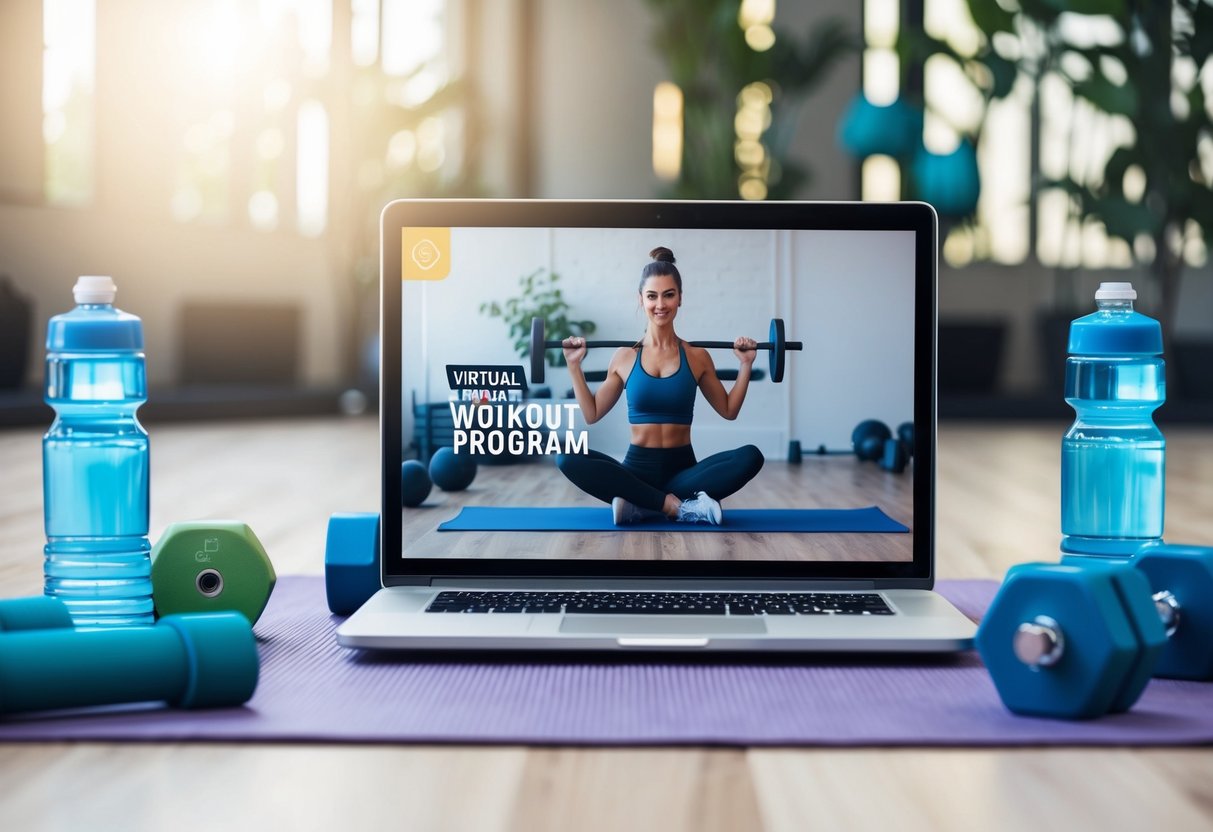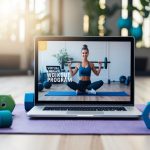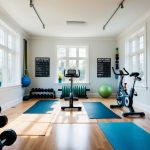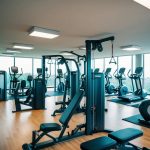
Tools and Equipment for Enhancing Home Workouts
For those engaging in virtual workout programs, selecting the appropriate tools and equipment can greatly enhance the exercise experience. Considerations for home gym gear and the integration of tech gadgets play a crucial role in optimizing fitness routines.
Selecting the Right Home Gym Gear
Choosing effective home gym equipment means focusing on space efficiency and versatility. Resistance bands are an excellent choice, providing varied intensity levels and supporting different exercises. Dumbbells, adjustable ones in particular, offer weight customization which is ideal for progressive strength training.
Stability balls can improve core strength and balance. Fitness instructors from online programs often recommend yoga mats for comfort and grip during floor exercises. Compact equipment, such as foldable exercise bikes, can fit into small spaces, making them suitable for urban apartments.
Investing in a few key pieces of versatile equipment can significantly broaden the range of achievable exercises at home. Ensuring these items align with the needs dictated by online workout sessions increases effectiveness and satisfaction. It is important to match the equipment to the type of workouts being performed, whether they focus on strength, cardio, or flexibility.
Tech Gadgets: From Apps to Fitness Trackers
Technology enhances workout experiences with various tools like apps and wearable devices. Applications, including Nike Training Club, provide tailored workout guidance, catering to all fitness levels, and can be conveniently used alongside videos or virtual classes.
Fitness trackers monitor metrics such as heart rate, step count, and calorie burn, offering real-time feedback. This data helps individuals set goals and track progress over time. Smartwatches often integrate seamlessly with apps, providing alerts and reminders to keep users engaged.
Some modern gym gear incorporates tech features like Bluetooth connectivity, allowing users to sync workout data with their devices. Incorporating these tech gadgets can enable smoother communication with online fitness coaches and further personalize exercise programs.
Designing a Long-Term Training Plan
Designing a long-term training plan involves careful structuring from beginner to advanced levels while ensuring gradual and sustained progress through progressive overload. It’s crucial to balance intensity, volume, and rest to meet personal fitness goals.
Beginner to Advanced: Structuring Your Routine
When structuring a training plan, start by assessing current fitness levels. Beginners might focus on foundational movements with shorter, less intense workouts. This allows them to build strength and endurance gradually.
As fitness improves, incorporating variety is key. This might include different workout styles such as cardio, strength training, and flexibility exercises. Intermediate athletes could alternate between high- and low-intensity days, helping prevent burnout.
For advanced athletes, routines might integrate complex exercises and higher intensity intervals. Tailoring this progression to individual capabilities ensures sustainable improvement and reduces injury risk.
Incorporating Progressive Overload
Progressive overload is essential in any training plan to promote strength gains and muscle growth. It involves gradually increasing workout demands over time. This can be done through adding weight, increasing reps, or changing exercises.
For beginners, small adjustments such as additional reps or longer sessions suffice initially. As they advance, incorporating heavier weights or complex movements enhances gains. Avoiding stagnation requires continuous assessment and adaptation.
For those at advanced levels, advanced techniques like drop sets or supersets can be employed. Strategic planning ensures that overload is applied effectively without compromising form or leading to fatigue. Regular adjustments maintain steady progress.



